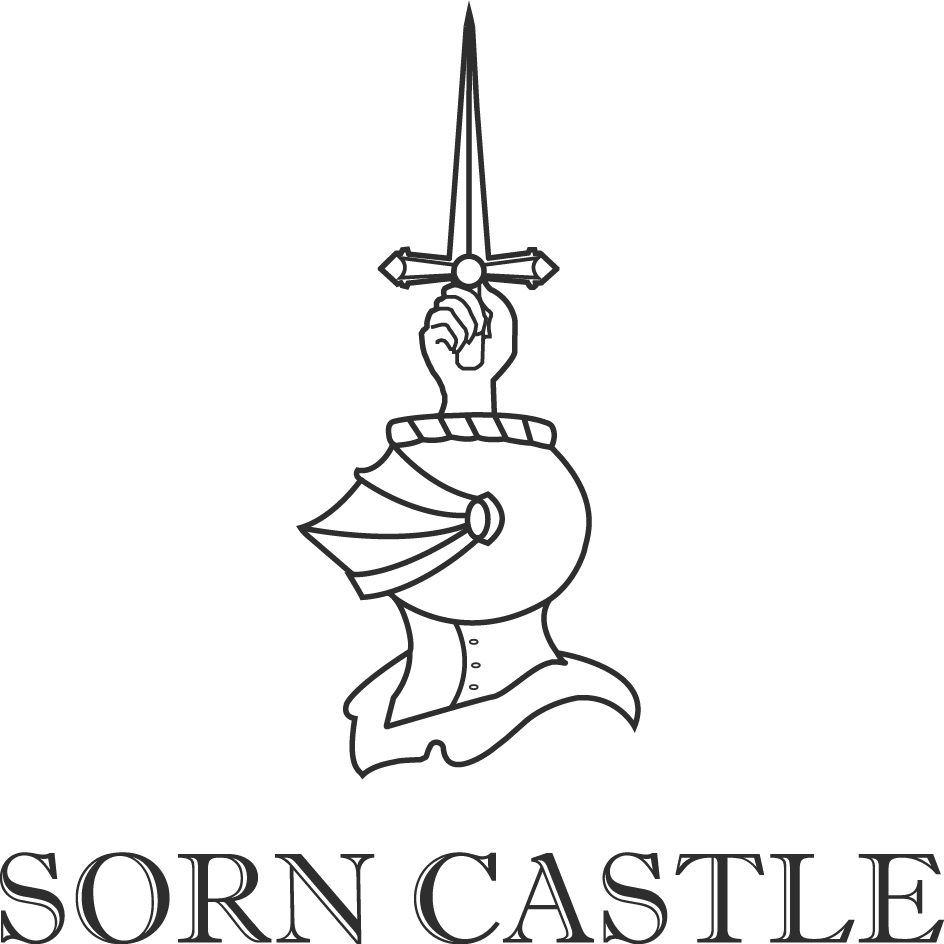The History of Sorn Castle
The earliest part of the castle was built as a keep between 1380 and 1409. It is not known who built the original structure but around that time the estate was owned by the Keith’s of Galston. By 1580 Sorn was under the charge of The 2nd Earl of Winton who added the dining room within the keep structure.
In 1598 it is said that King James VI visited Sorn Castle to attend a marriage.
After this period, the time of the Jacobeans prevailed and there was much unrest with Sorn being run as a garrison, with a small army of mounted soldiers ready to defend themselves against being ransacked. This seems a far cry from the modern world but in those days, Sorn must have felt a million miles from the safety of the Royal court in the south.
During this period, in 1620 the 3rd Earl of Winton sold the estate to Sir John Campbell of Lawers and in 1700 Sir Hugh Campbell, 3rd Earl of Loudoun, married Margaret Dalrymple who had spent considerable time at the Courts of Queen Anne and George I. Happily, she was largely responsible for planting and landscaping the neglected grounds, creating much of the hedging, walk ways, garden and orchards seen today.
Some of her original designs are preserved and show the elegance and ambition of her style. The grounds showcase many wonderful foreign plants and trees that were being introduced, with exotic flair new schemes were explored to create formal walkways and structured areas within the grounds.
After Margaret’s death, the castle and the estate passed to John Campbell, 4th Earl of Loudoun and on his death in 1782 the estate was sold again. The new owner was William Tennent of Poole who quickly set about to make further improvements to his acquisition. The enormous inner hall was added with two elaborate staircases, one in marble and another in carved wood with an impressive sweeping dual staircase, one for ascending and one for descending. The drawing room was also created with its detailed ceiling, large bay window and silk wall panels and still retains the original, oversized crystal chandelier.
However, these were uncertain times and once again the estate was put on the market and purchased by Alexander Graham who sold it shortly after to John Stevenson of Dalgain who put it on the market again. Eventually James Somervell purchased the castle in 1797 but tragically, died soon after leaving the estate to his wife. In 1837 a suspension bridge was built over the river, below the castle, to demonstrate the glories of Victorian engineering and man’s authority over nature as it also prevented guests from having to wade across the turbulent waters of the River Ayr to enjoy the walks the other side.
In 1865 the noted architect David Bryce was employed to design and build a large stable courtyard, an arched gatehouse at the top of the drive and a gatehouse at the bottom entrance, as well as redesign the battlements of the castle to make them more impressive. Other improvements and enlargements were also considered and undertaken to include kitchens, a very practical cloakroom and the music room to enhance the entertaining experience.
In 1907 the estate was placed on the market once more and purchased by Thomas W. McIntyre who embarked on further improvements to the castle. A double aspect billiards room was added and an enormous project undertaken to completely remodel the frontal aspect of the building. To the right of the main drive a monumental amount of earth was quarried to raise the driveway, large banks became level with the surrounding park and subsequently what was the ground floor became the basement. This allowed for the most impressive way to exhibit the newly designed Edwardian porte-cochere through which a horse and carriage or motor vehicle could pass, in order that guests could alight under cover, protected from the weather.
A turbine generator was also installed, making Sorn one of the first private homes in the country to have electricity. To illustrate just how proud the Edwardian’s were of this achievement, all the light fittings were designed to have the bulbs on display. All of which have been lovingly cared for and the original chandeliers preserved, which are still on display in the castle today.




